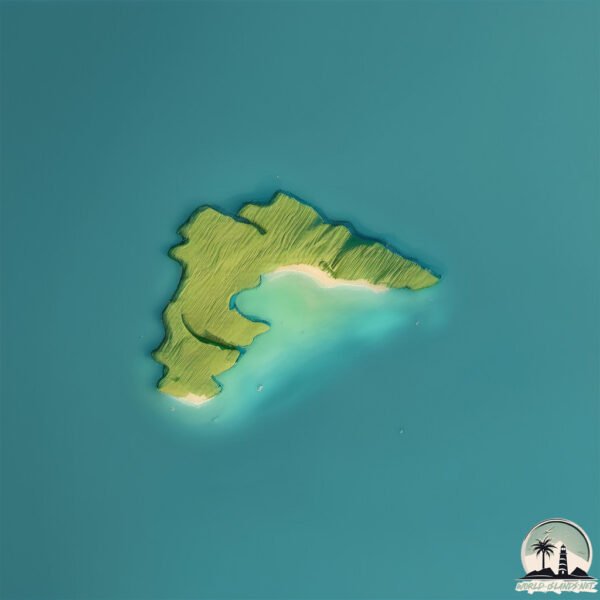Welcome to Île d’Aix , a Temperate island in the Bay of Biscay, part of the majestic Atlantic Ocean. This guide offers a comprehensive overview of what makes Île d’Aix unique – from its geography and climate to its population, infrastructure, and beyond. Dive into the details:
Geography and size of Île d’Aix
Size: 1.675 km²Coastline: 7.8 kmOcean: Atlantic OceanSea: Bay of BiscayContinent: Europe
Île d’Aix is a Small Island spanning 1.7 km² with a coastline of 7.8 km.
Archipel: –
Tectonic Plate: North America – Covers North America and parts of the Atlantic and Arctic Oceans, characterized by diverse geological features and varying levels of seismic activity.
The geographic heart of the island is pinpointed at these coordinates:
Climate and weather of Île d’Aix
Climate Zone: TemperateClimate Details: Temperate Oceanic ClimateTemperature: Warm Summer
Climate Characteristics: Known for its moderate year-round temperatures with ample rainfall and no dry season. Warm summers are characteristic.
Topography and nature of Île d’Aix
Timezone: UTC+01:00Timezone places: Europe/ParisMax. Elevation: 7 m Mean Elevation: 4 mVegetation: Sparse VegetationTree Coverage: 61%
The mean elevation is 4 m. The highest elevation on the island reaches approximately 7 meters above sea level. The island is characterized by Plains: Flat, low-lying lands characterized by a maximum elevation of up to 200 meters. On islands, plains are typically coastal lowlands or central flat areas.
Dominating Vegetation: Sparse Vegetation
Vegetation: 4 vegetation zones – Diverse Island
Infrastructure and Travelling to Île d’Aix
Does the island have a public airport? no .
Does the island have a major port? no .
The mean population of Île d’Aix is 145 per km². Île d’Aix is Moderately Inhabited. The island belongs to France .
Continuing your journey, Oleron is the next notable island, situated merely km away.
Île d'Aix – 360° Island Walk
Hello Travelers!!! Get your VR-Google Ready and take a fully immersive 360° stroll across the serene Île d'Aix, one of France's ...
Île d'Aix – 360° Island Walk
Hello Travelers!!! Get your VR-Google Ready and take a fully immersive ...
Hello Travelers!!! Get your VR-Google Ready and take a fully immersive 360° stroll across the serene Île d'Aix, one of France's ...
Walking tour of Île-d'Aix - This island was where Napoleon spent his last day in France
We visited Île-d'Aix so you don't have to. This is a historic ...
We visited Île-d'Aix so you don't have to. This is a historic fortified island just off the coast of La Rochelle and near to Fort Boyard.
The Tranquility of Île d'Aix - A Serene Stroll
Hello Travelers!!! Join me on a peaceful stroll across the picturesque ...
Hello Travelers!!! Join me on a peaceful stroll across the picturesque Île d'Aix, a small yet famous island off the French coast.
France is classified as Developed region: G7: Group of Seven – Major advanced economies, including Canada, France, Germany, Italy, Japan, the United Kingdom, and the United States. The level of income is High income: OECD.
News – Latest Updates and Headlines from Île d’Aix
Stay informed with the most recent news and important headlines from Île d’Aix. Here’s a roundup of the latest developments.
Loading...
Please note: The data used here has been primarily extracted from satellite readings. Deviations from exact values may occur, particularly regarding the height of elevations and population density. Land area and coastline measurements refer to average values at mean high tide.

